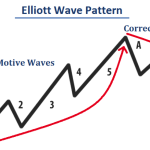
By ATGL
Updated November 21, 2024
The financial markets stand at a pivotal juncture heading into 2025. A convergence of technological disruption, evolving monetary policies, and shifting global trade patterns creates both opportunities and challenges for investors. This analysis examines the key factors likely to shape market performance and sector opportunities in the coming year.
Key Trends Influencing the Market
Economic Growth and Its Impact
Current GDP growth projections for 2025 indicate a moderation of 2.1% to 2.4%, reflecting a cooling from previous years’ robust expansion. Labor market dynamics show persistent wage pressure in skilled sectors, particularly technology and healthcare, where talent competition remains fierce. Manufacturing demonstrates remarkable resilience through productivity gains, driven by automation adoption and supply chain optimization.
The service sector continues its expansion, particularly in digital commerce and healthcare technology. This growth reflects fundamental changes in consumer behavior and technological integration across industries. Major stock market indexes broadly reflect these shifts, with sector weightings evolving to capture emerging business models. Corporate earnings forecasts mirror this economic backdrop, with S&P 500 companies projecting 8% to 10% earnings growth.
Federal Reserve Interest Rate Policies
The Federal Reserve’s policy trajectory significantly influences market behavior. Banks and financial institutions stand to benefit from a higher rate environment, as net interest margins typically expand. Conversely, utilities and real estate investment trusts often face headwinds from rising yields. Technology companies, particularly those with high growth but lower current earnings, may see valuation pressure from higher discount rates.
Historical data demonstrates that market sectors respond differently during rate adjustment cycles. Value stocks typically outperform during periods of rising rates, while growth stocks face multiple compression. This pattern suggests potential opportunities in financial services, energy, and materials sectors, which historically demonstrate strength in similar rate environments.
Consumer Spending Patterns
Retail sales data reveals accelerating shifts in consumer behavior that will likely persist through 2025. Digital commerce transforms traditional business models across sectors, while payment processing technology advances drive financial technology sector growth. Premium brands demonstrate particular resilience among millennials and Gen Z consumers who prioritize experience and sustainability.
Consumer discretionary spending patterns show increasing bifurcation between premium and value segments. Companies successfully targeting either end of this spectrum outperform those caught in the middle market. This trend particularly impacts retail, automotive, and consumer services sectors.
Effects of U.S. Elections on the Market
Election cycles historically introduce market volatility, with 2025 likely following this pattern. Statistical analysis shows market volatility typically increases by 12% to 15% during campaign seasons, creating opportunities for tactical positioning. Healthcare stocks frequently experience heightened sensitivity to election dynamics due to ongoing policy debates around drug pricing and insurance regulations. Energy sector performance correlates strongly with environmental policy expectations, while financial stocks respond to anticipated regulatory changes.
Geopolitical Factors and Their Implications
Global trade relationships continue evolving, significantly impacting market performance. Supply chain diversification benefits emerging markets, particularly in Southeast Asia. Technology export controls affect semiconductor industry dynamics, creating both challenges and opportunities throughout the supply chain. Currency market fluctuations impact multinational corporation earnings, particularly affecting technology and industrial sectors.
2025 Stock Market Predictions: Sector Analysis
Technology Sector Outlook
The technology sector faces significant opportunities and emerging challenges heading into 2025. Artificial intelligence implementation drives sustained demand for enterprise software and cloud services, with strong growth in machine learning applications and data analytics platforms. Cybersecurity spending shows consistent growth as digital transformation increases network vulnerability surfaces.
However, the sector faces notable headwinds. Regulatory oversight intensifies globally, focusing on data privacy and market competition. Labor costs continue rising as competition for skilled technology workers intensifies. Component supply constraints affect hardware manufacturers, while international market access challenges create revenue uncertainty.
Healthcare Sector Insights
Healthcare innovation accelerates across multiple subsectors, creating diverse investment opportunities. Biotechnology companies advance gene therapy applications, with several late-stage clinical trials potentially reaching commercialization in 2025. Medical device manufacturers leverage artificial intelligence and remote monitoring capabilities to develop next-generation platforms.
Digital health solutions are increasing adoption, transforming traditional healthcare delivery models. Demographic trends provide sustained tailwinds for the sector, as aging populations drive increased healthcare utilization. However, cost containment pressure influences reimbursement rates and pricing strategies.
Energy Sector Trends
The energy sector continues its transformation as renewable technology advances and traditional energy companies adapt their business models. Solar and wind energy costs decline further through technology improvements and scale efficiencies. Grid storage technology advancement enables higher renewable energy penetration rates, creating opportunities for battery manufacturers and grid management software providers.
Natural gas maintains its role as a transition fuel, particularly in emerging markets replacing coal-fired generation. Companies positioned across both conventional and renewable energy value chains demonstrate more stable financial performance through market transitions.
Value Stocks vs. Growth Stocks
Market conditions in 2025 suggest potential shifts in investment style performance. Value stocks benefit from several catalysts, including rising interest rates that disproportionately impact high-multiple growth stocks. Infrastructure spending programs provide revenue opportunities for industrial and materials companies typically trading at value multiples.
Growth stocks maintain opportunities in sectors demonstrating sustained innovation and market expansion. Digital transformation trends continue driving technology sector revenue growth, while healthcare innovation supports biotechnology and medical technology valuations.
Market Volatility and Challenges
Market structure evolution influences volatility patterns heading into 2025. Algorithmic trading systems account for an increasing share of market volume, potentially amplifying price movements during stress periods. Exchange-traded fund flows impact stock market sector rotation dynamics, as thematic and sector-specific products attract increasing assets.
Traditional volatility measures may understate actual market risk due to changing market structure and increased systematic trading strategies. Risk management approaches require adaptation to these conditions, with particular attention to correlation changes during stress periods.
FAQs About Predictions for the Stock Market
Should I Sell or Hold My Stocks?
Investment decisions require careful consideration of individual circumstances rather than general market predictions. Portfolio evaluation should consider investment timeline and risk tolerance. Professional financial advisors provide valuable perspectives on aligning investment strategies with personal financial objectives.
What Is the Peri Stock Forecast for 2025?
Market sentiment for Perion Network (PERI) appears bearish in the near term. However, CoinCodex projections suggest the potential for significant growth, forecasting up to 200% gains for investors who enter positions before 2025 and hold through year-end. The ad-tech company’s performance will likely depend on digital marketing trends and its ability to maintain competitive advantages in the evolving advertising ecosystem.
What Stock Has the Best Five-Year Forecast?
Long-term performance potential depends on competitive advantages, innovation capacity, and strategic positioning. Diversification across promising sectors typically provides better risk-adjusted returns than concentration in individual stocks.
What Is the Forecast for the S&P 500 in 2025?
S&P 500 performance reflects both broad economic conditions and company-specific factors. Aggregate earnings growth projections suggest 6% to 8% annual returns, though significant variation exists across sectors. Valuation metrics indicate certain sectors trade at premium multiples requiring sustained growth to justify current levels.
Keep Up With the Latest Stock Market Trends With Above the Green Line
Successful market navigation requires consistent analysis and strategy adaptation as conditions evolve. Above the Green Line membership services provide comprehensive market insights that support informed investment decisions. Professional analysis of market trends, sector rotation opportunities, and individual security selection helps members develop and maintain effective investment strategies.






